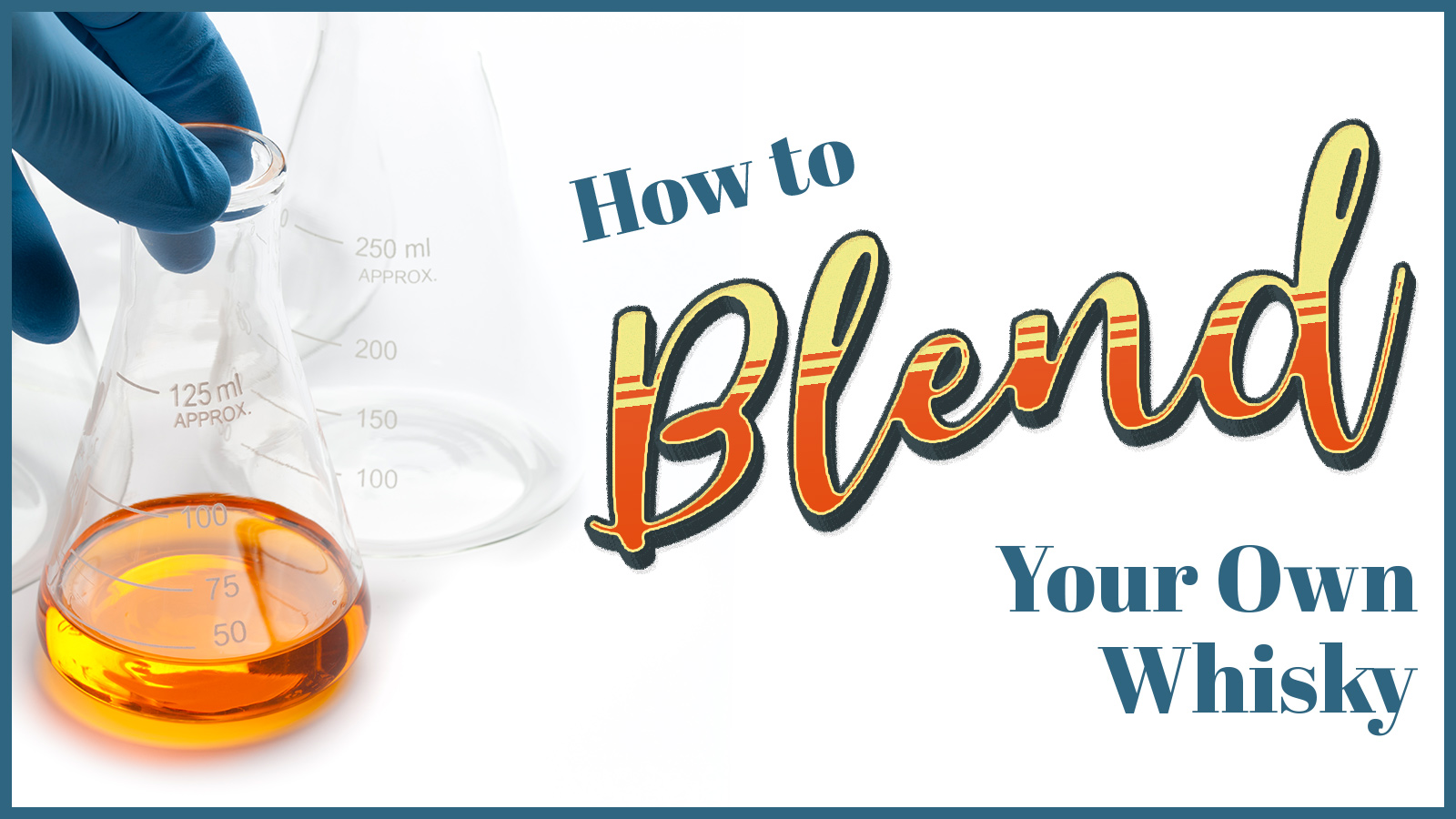
Shiny copper stills get all the attention, but the most challenging part of whisky making usually happens behind closed doors. Except for single barrel offerings, almost every whisky is a blend of barrels. Master blenders face a challenge whether they’re replicating a flavor profile or striving to create something totally unique.
“Blending is a creative art,” explains John Glaser, founder and whisky maker at Compass Box Whisky, which specializes in the innovative blending of whiskies.
Although distilling must be left to the professionals, anyone can experiment with creating blends at home. Amateurs are now blending custom whiskies from commercially-available bottles, a practice many refer to as “vatting.” In a way, the task is easier than the one facing a distillery’s master blender, since most bottles on the market have already been blended to a high level of quality. At the same time, the home blender can combine whiskies across different distilleries and even styles, giving them a much broader palette of whisky flavors.
“The challenges in blending are in knowing when a new recipe is finally complete,” warns Glaser. “Sometimes it’s difficult to stop that process, because you want to keep tweaking to get to some idea of perfection.”
Start by making some single-serving drams for yourself, jiggering an ounce of this, a quarter-ounce of that. When you hit upon something great, use a graduated cylinder to scale the recipe to full-size bottles. Allow it to sit for a week so the flavors marry, like day-old stew. There are no hard and fast rules for blending, but these guidelines will put you on the right track to creating a delicious whisky that is all your own. No still required.
A Better Bourbon
Start with: A base of reasonably priced barrel-strength bourbon, like Wild Turkey Rare Breed or Stagg Jr. (33-50% of your blend).
Add: One or two other “value” bottles that offer flavors beyond your base bourbon, like intense floral notes (Four Roses Single Barrel OBSQ) or a back-end spiciness (Old Grand-Dad 114).
Try: Adding a wheated bourbon to a high-rye bourbon, or incorporating atypical grains from craft producers like Corsair and Koval.
Top tip: Add just 5-10% of a much older, woodier bourbon, something Four Roses master distiller Brent Elliott does when making his Limited Edition blends. “It’s about balances, bringing out good characteristics, polishing off bad.”
Blended Malt Scotch Whisky
Start with: A well-rounded single malt like Glenmorangie Original 10 year old as your base (50-60% of your blend).
Add: Single malts to bolster the complexities of your vat. Think of the sweeter Speysides, a savory Craigellachie, and/or briny coastal whiskies (Talisker and Old Pulteney).
Try: Incorporating different cask types. Adding up to 25% of Aberlour 10 year old (sherry) or Arran Port Cask Finished will round out the more abundant bourbon cask malts.
Top tip: Use caution with heavily peated whiskies. Even just 5% of an Islay malt can quickly dominate your vat and become impossible to blend out.
An Irish Original
Start with: A brash but palatable budget bottle of Irish blended whiskey (like Powers Gold Label) for at least half of your vat.
Add: Some fuller bodied, spendier pot still offerings (no more than 25%) like Redbreast 12 year old and/or Green Spot.
Try: Adding quality grain whiskey (around 10%), like the spicy Teeling Single Grain or the highly tropical, corn-based Kilbeggan 8 year old Single Grain for greater drinkability and complexity.
Top tip: Don’t discount affordable whiskeys that may seem harsh by themselves. They can add some desirable boldness to a home vatting.
What You’ll Need
Aside from a decent and varying selection of whiskies, few tools are needed to blend at home.
Calculator App to scale percentages and proportions.
Japanese-Style Jigger with 0.5 and 0.75-ounce measurements, for building single-serving vattings.
Glass Eye-Dropper marked in increments for adding tiny flavoring portions.
Graduated Cylinder with ounce markings for larger batches. A measuring cup works fine, too.
Flask Funnel for filling bottles both large and small.
Boston Round Bottles of sample sizes (2 oz.) and larger (32 oz.). Label each with the formula or give your whisky a name.






